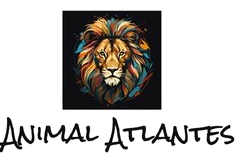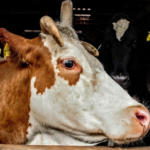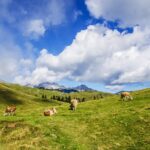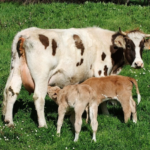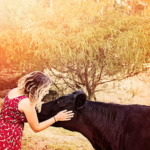We often see black cows with white spots. But have you ever pondered over their unique coloring patterns? Let’s explore more about them.
Black cows with white spots are usually identified as Holsteins but can also be of other breeds. There is a clever logic behind their pied existence: it confuses horseflies who would otherwise lay eggs on the cow’s body. Most dairy cows carry similar markings, but the coloring may vary.
Key Takeaways:
| Topic | Summary |
|---|---|
| Black cows with white spots | Black cows with white spots are commonly identified as Holsteins, but other breeds also exhibit similar coloring patterns. The distinct markings serve a purpose of confusing horseflies, preventing them from laying eggs on the cow’s body. Most dairy cows share similar markings, though the coloring may vary. |
| What cow is black with white spots? | Holsteins are the most well-known black cows with white spots. Other breeds with similar black-and-white coloring include Lakenvelder, Texas Longhorn, Guzerat, German Black Pied, Dhanni, Lineback, Blaarkop, and Girolando. Such distinctive markings are relatively rare and add diversity to cattle appearances. |
| Do black cows have white spots? | Several black cow breeds, including Holsteins, Guzerat, Lineback, and German Black Pied, feature white spots. These black and white markings are unique to each cow, similar to fingerprints. Holsteins are major milk producers, contributing significantly to the milk supply of nations. |
| What are black cows with white faces called? | Black cows with white faces are typically referred to as Hereford cattle. They are English cattle bred primarily for beef production. Other black cows with white faces include Simmental, Black Hereford, Hinterwald, Vorderwald, Abondance, Montbéliarde, and Black Baldy. |
| Why do cows have black and white spots? | Black and white spots on cows serve as a fly repellant. The dual-colored spots confuse horseflies that perceive polarized light, altering their vision. This prevents horseflies from landing on the cow’s body and laying eggs, contributing to the cows’ health. |
| Are spotted cows dairy cows? | Many spotted cows, including Holsteins and Jersey cows, are indeed dairy cows. However, dairy cows come in various colors, not limited to black and white. Other spotted dairy cow breeds include Brown Swiss, Guernsey, Ayrshire, and Milking Shorthorn. |
| Do all cows have spots? | Dairy cows often have spots, but some can be single-colored. Spots may vary in color, and each cow’s markings are unique. Cows of the same breed do not necessarily have similar spots. Spots are common in Holsteins and contribute to the milk supply and calm temperament of these cows. |
| Are all spotted cows female? | Spotted cows can be both male and female. While dairy cows are often associated with spots, gender is not determined by spotting. Bulls can carry spots, but the presence of prominent udders distinguishes female cows. |
| Are calves born with white spots? | Calves are born with white spots if one or both parents have similar markings. Markings can vary, and calf coloration is influenced by genetics. Black coat color tends to dominate over red and brown, so cross-breeding may result in black-coated offspring. |
| Do dairies only use black and white cows? | Dairies have a substantial percentage of black and white cows, primarily Holsteins, due to their high milk productivity. However, dairies also use cows of other breeds with different coat colors. Various cow breeds contribute to dairy production. |
There is a lot of speculation regarding spotted cows. Allow us to tell you more about them.

What cow is black with white spots?
Cows come in various color patterns. From gray, black to red and white. Let’s check which black cows have white spots.
Holsteins are the most commonly known black cows with white spots. In fact, the black-and-white coloring is one of their most distinguishable characteristics. Other cow breeds with similar coloring include:
- Lakenvelder
- Texas Longhorn
- Guzerat
- German Black Pied
- Dhanni
- Lineback
- Blaarkop
- Girolando
Distinct black and white spots on cattle, contrary to popular belief, are quite rare and add diversity to the coloring pattern of the animal.
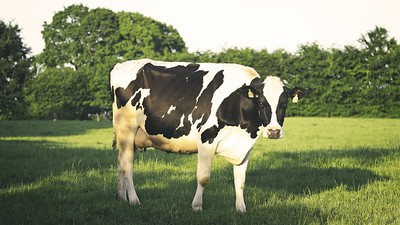
Do black cows have white spots?
There are several breeds of black cows that carry white spots. Let’s explore more in this regard.
Black cows like Holsteins, Guzerat, Lineback, and German Black Pied are popular domestic cattle that carry white spots. Their distinct black-and-white markings give them a unique appearance. Out of these, Holsteins are the largest producer of milk and contribute immensely to the annual yield of a nation.
It is worth noting that no two cows have the same markings. The black and white spots of cows are like fingerprints and are unique to each animal.
What are black cows with white faces called?
While you might have heard of black-and-white cows, there are certain breeds that have a black body and white face. Let’s learn more about them.
Black cows with white faces are usually referred to as Hereford cattle. They’re a true breed of English cattle that are primarily raised for deriving beef. Hailing from England’s West Midlands region, they are characterized by their white markings and dark colored coat. Some other black cows with white faces include:
- Simmental
- Black Hereford
- Hinterwald
- Vorderwald
- Abondance
- Montbéliarde
- Black Baldy
Why do cows have black and white spots?
Cows with black and white spots look very attractive. But, there is an interesting story behind their origin. Let’s learn more about it.
The dual-colored spots on the cow’s body confuse the horseflies who see polarized light. The spots alter the way the light gets reflected from the cow’s body, which confuses the horseflies’ vision. As a result, they do not land on the cow’s body to lay eggs, and this prevents any health issues.
As such, we can say the black and white spots act as a fly repellant and prevent any form of infestation, thus keeping the cows healthy.
Are spotted cows dairy cows?
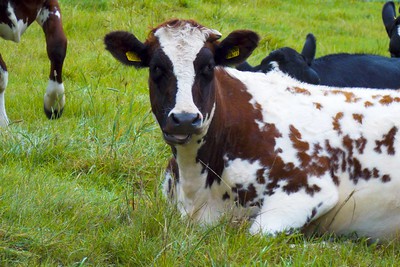
A common belief is that spotted cows are naturally dairy cows. Let’s find out if this is the truth or a mere misconception.
It is true that most spotted cows (like Holsteins and Jersey cows) are dairy cows. In addition to being spotted, dairy cows have an angular frame with pronounced udders and usually live in barns or pastures. Other common spotted dairy cows include Brown Swiss, Guernsey, Ayrshire, and Milking Shorthorn.
It is worth mentioning here that not all black and white cows are dairy cows. Dairy cows come in shades of brown, red, tan, and even gray.
Do all cows have spots?
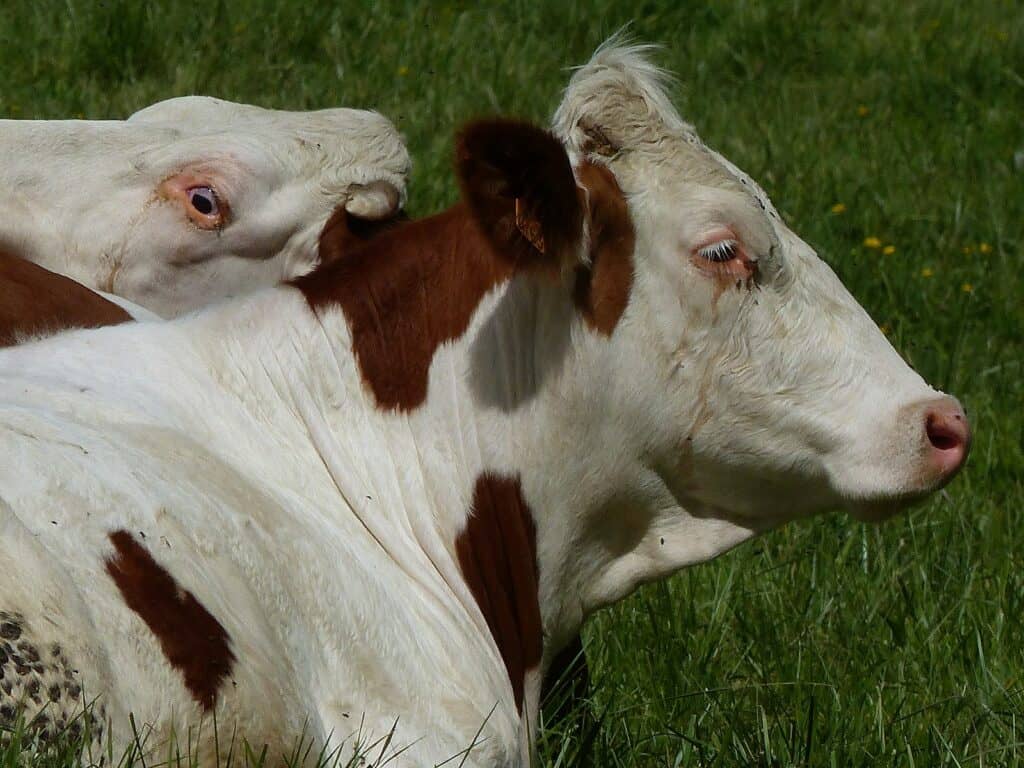
Spotted cows are easy to recognize and locate. But, do all cows carry these spots in some form or another? Let’s find out.
Usually, all dairy cows have spots, but some can be single-colored too. The spots may vary in color – from tan, brown, gray to white and black. A common misconception is cows of the same breed always have similar spots. But that’s not true at all – the spots on cows vary from one cow to another.
Spotted dairy cows, especially Holsteins, contribute immensely to the economy by providing a regular supply of nutrient-dense milk. In addition, they’re easy to maintain and mostly have a calm temperament.
Are all spotted cows female?
Since female cows are the chief milk producers, it is believed that they’re the only spotted cows. Is this the truth? Let’s explore together.
Spotted cows can be both male and female. Although the common perception is that only female cows are spotted, that is far from the truth. Some female cows can also have a solid color, whereas bulls can carry spots. The most distinctive marking of a cow is the presence of prominent udders, which are absent in bulls.
Distinguishing between cows and bulls is pretty easy. Remember, spots have nothing to do with a cow’s gender, and you should instead look for the anatomical features.
Are calves born with white spots?
Genetics can be quite powerful – especially in the case of animals. Let’s explore whether calves are born with white spots.
Calves are born with white spots if one or both of their parents have similar spots. Although these markings may vary, they remain distinct. The coloration patterns of cows are closely associated with their genetic formulation. Breeding horses with the same coat color is likely to produce similar offspring.
We should mention here that the black coat color tends to dominate over red and brown coloring. So, if there’s cross-breeding between a cow with a black coat and one with a red coat, the offspring will have a black coat.
Do dairies only use black and white cows?
A common misconception is that dairies use only black and white cows. Let’s learn more about this aspect.
It is true that dairies have a large percentage of black and white cows. Most of these are Holsteins, which are the largest producer of milk. Therefore, dairies prefer rearing them as they are more productive. However, dairies also use cows of other breeds which have a different coat coloring.
As such, while most dairies might prefer rearing Holsteins, they are by no means the only cows used by dairies. You’ll always find different breeds of cows.
Conclusion
Black cows with white spots are often called piebald animals, and they have a very distinctive and gorgeous appearance.
There’s a lot of speculation regarding the uses of spotted cows and how they are reared. To ensure proper milk production, they’re fed a mix of grains, corn silage, and hay. Of course, even bulls are spotted, and we cannot assign a gender to spotted cattle. However, we’ve to look out for distinctive female characteristics in female cows.
Cows, especially dairy cows, contribute immensely to the global economy and are therefore reared with utmost caution. They’re versatile and friendly creatures who are quite diverse.
